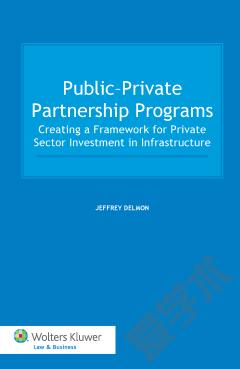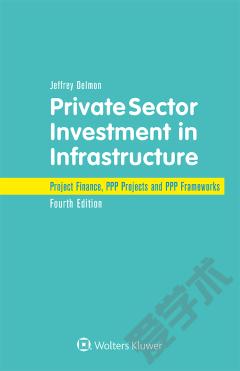Public-Private Partnership Programs —— Creating a Framework for Private Sector Investment in Infrastructure
----- 公私合作伙伴:投资环境
Project finance through public–private partnerships (PPP) can offer private investors the security that allows them to fill the huge gap of unmet need left over when sources of public and donor financing are exhausted. PPP can increase the proportion of large-scale infrastructure projects delivered on time and on budget, increase innovation and competition, enhance project evaluation and due diligence, prioritize value for money, and provide new opportunities for local capital markets. However, the recent financial crises, the market doldrums that have followed, and the cautious response of financial regulators have substantially reduced the financing available for PPP projects. Accordingly, governments and business entities need to focus more than ever on managing lenders and on creating the right framework for PPP.This book’s analysis promotes a new, dynamic, iterative process supported by different functions and actors within the government, the private sector, and communities seeking infrastructure. The author, a highly experienced World Bank development agent and preeminent authority on PPP, fully describes the elements that make up an effective PPP framework in the current economic environment. In great detail he covers such topics as the following:? socializing PPP in government and amongst key stakeholders;? identifying political leadership for buy-in;? creating operating and best practice guidelines;? developing strategic demonstration projects;? establishing processes, practices, and funding for project preparation and fiscal risk management;? program monitoring, knowledge capture, and sharing of lessons learned;? technical training for legal, accounting, finance, and risk mitigation specialists;? access to justice and dispute resolution, and enforcement of arbitration decisions;? managing tensions between the promotion of PPP and the protection of the government from liabilities;? conducting robust feasibility studies;? funding to purchase land or other assets;? how to avoid political capture or interference;? gains available from more efficient use of rail freight operations, seaports, and airports;? employment;? preparation of bid documents;? political risk;? currency risk; and? management and governance of an intermediary.The focus throughout is on learning by doing as an important part of identifying gaps in the investment climate.This book will be of great value to governments and multinational corporations engaged in construction projects, as well as the financial institutions that handle their credit and financing. Economists and policymakers in government and relevant regional and global institutions will also find much here that clarifies and facilitates solving the problems that inevitably arise at the many stages of an infrastructure project.
{{comment.content}}








 京公网安备 11010802027623号
京公网安备 11010802027623号